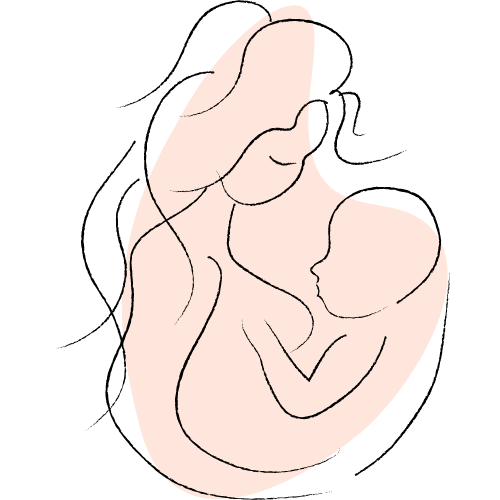The excitement of expecting a baby often comes with the curiosity about whether you’ll have a boy or a girl. While scientific methods like ultrasounds and genetic tests provide accurate answers, many expectant parents enjoy trying out gender prediction quizzes and tests for fun. This article explores various gender prediction quizzes and tests, offering a blend of traditional folklore and modern methods to guess your baby’s sex.
1. The Chinese Gender Chart
The Chinese Gender Chart, also known as the Chinese Lunar Calendar, is a centuries-old method believed to predict a baby’s sex based on the mother’s age at conception and the month of conception.
How It Works
- Determine Mother’s Age: Find out the mother’s age at the time of conception according to the Chinese calendar.
- Conception Month: Identify the lunar month in which conception occurred.
- Cross-Reference: Use the Chinese Gender Chart to cross-reference these two factors to predict the baby’s gender.
Accuracy and Fun
The Chinese Gender Chart is widely used for its simplicity and cultural significance. While not scientifically proven, many find it an enjoyable way to engage with pregnancy traditions.
2. The Ring Test
The Ring Test is a popular old wives’ tale that uses a ring and a string to predict your baby’s sex.
How It Works
- Prepare the Ring: Tie a wedding or engagement ring to a piece of string.
- Swing the Ring: Hold the string over the pregnant woman’s belly, letting the ring dangle and swing.
- Observe the Movement: If the ring swings in a circular motion, it’s believed to indicate a girl. If it swings back and forth, it’s thought to signal a boy.
Accuracy and Fun
The Ring Test is purely anecdotal and lacks scientific backing. However, it’s a fun and engaging way to involve friends and family in the guessing game.
3. The Baking Soda Test
The Baking Soda Test is a DIY method that involves mixing baking soda with urine to predict your baby’s gender.
How It Works
- Collect Urine Sample: Collect a sample of your morning urine in a clean container.
- Add Baking Soda: Add a tablespoon of baking soda to the urine sample.
- Observe Reaction: If the mixture fizzes and bubbles, it’s believed to indicate a boy. If there is no reaction, it’s thought to suggest a girl.
Accuracy and Fun
This test is based on the pH levels of urine, which can fluctuate due to various factors. While it’s not scientifically accurate, it’s a simple and entertaining test to try.
4. The Old Wives’ Tales
Several old wives’ tales and myths claim to predict a baby’s gender based on various symptoms or conditions experienced by the mother.
Common Myths
- Cravings: Craving sweet foods might indicate a girl, while salty or sour cravings might suggest a boy.
- Morning Sickness: Severe morning sickness is often believed to predict a girl, while milder symptoms are thought to indicate a boy.
- Belly Shape: Carrying high is said to suggest a girl, while carrying low may indicate a boy.
Accuracy and Fun
These myths are not scientifically supported but are popular for their cultural and anecdotal value. They add an element of fun and tradition to the pregnancy experience.
5. The Ramzi Theory
The Ramzi Theory is a method that claims to predict the baby’s sex based on the location of the placenta as seen in early ultrasound images.
How It Works
- Obtain Ultrasound Image: Review an early ultrasound image, typically done around 6-8 weeks of pregnancy.
- Locate the Placenta: Identify the position of the placenta in the uterus.
- Interpret the Theory: If the placenta is on the right side, it is believed to indicate a boy. If on the left side, it may suggest a girl.
Accuracy and Fun
While some claim the Ramzi Theory has a high accuracy rate, scientific evidence supporting this method is limited. It can be an interesting addition to the guessing games surrounding pregnancy.
6. Gender Prediction Apps
Several mobile apps are available that offer gender prediction quizzes based on various factors, including physical symptoms and family history.
How They Work
- Input Information: Enter details such as cravings, morning sickness, and other symptoms into the app.
- Receive Prediction: The app uses algorithms and data to predict the baby’s sex.
- Compare Results: Some apps also provide a comparison with other methods and predictions.
Accuracy and Fun
Gender prediction apps are a modern and engaging way to guess your baby’s sex. While they may not be scientifically accurate, they offer a fun and interactive way to involve friends and family.
Conclusion
Gender prediction quizzes and tests offer an entertaining way to guess your baby’s sex before the official ultrasound. From traditional methods like the Chinese Gender Chart and the Ring Test to modern apps and old wives’ tales, these methods provide a variety of ways to engage in the guessing game. While they lack scientific backing, they add a fun and personal touch to the pregnancy journey.
